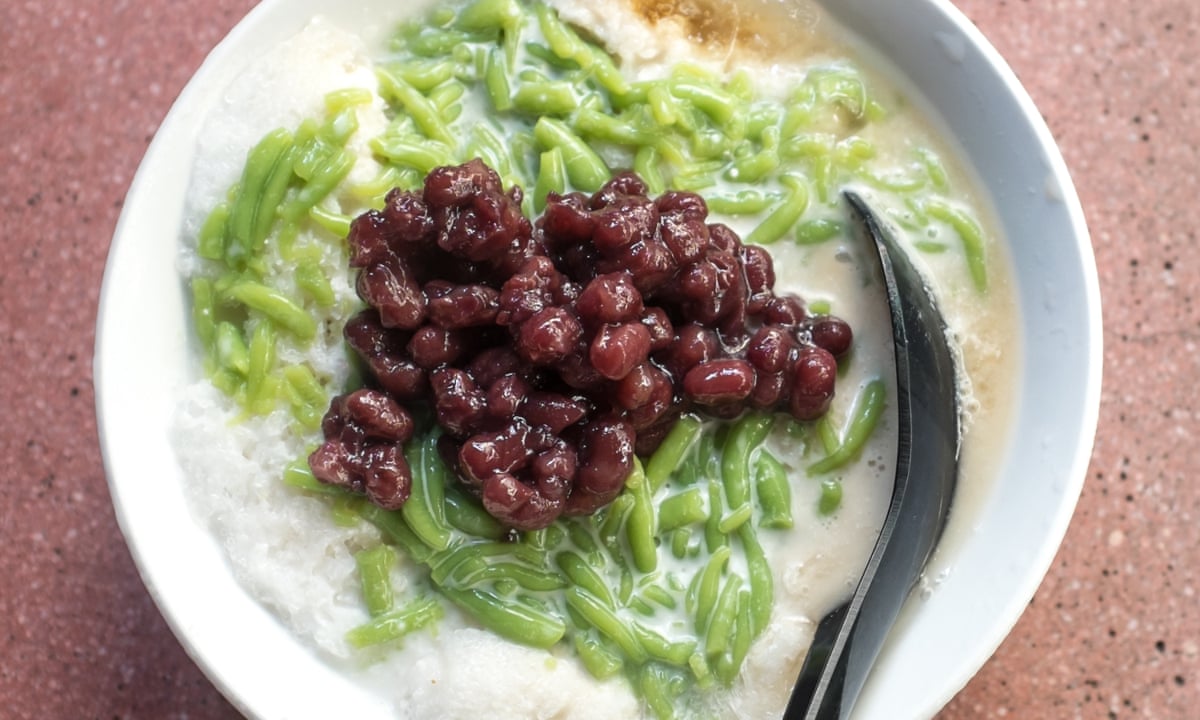ON HAWKER: Cendol
ON HAWKER is our ongoing research project on Singapore’s hawker culture. We explore essential dishes from this city’s culinary tradition and investigate their international influences.
Desserts are the best cure to your summertime sadness, and in Singapore few things are an instant remedy like the sweet glory of Cendol.
Recently rated as one of the top 50 desserts around the world1, cendol’s origins are hotly debated between Singaporeans and Malaysians. The truth extends beyond both countries, to at least an Indonesian predecessor called the dawet. But the story goes even further back, to Persia.
Cendol is a rice-based jelly, slow cooked and pressed through a strainer. It is usually served on a bed of shaved ice that floats in copious amounts of cool coconut milk, often accompanied with kidney beans or corn. At its purest, a bowl of cendol comprises three parts: shaved ice, coconut milk, and the cendol itself.
Coconuts are among the most valuable native ingredients to Southeast Asia. Malaysians in seaside towns do not waste any part of the coconut. They eat its shavings, drink its water, and use its husks to skewer satays. The production and use of coconut milk in cendol is part of the practice of using the ingredient to its full capacity.2

The dessert begins with broken kernels of rice that are cooked together with pandan— leaves that impart a vanilla essence— and gula melaka— sugar that is derived from a palm tree. Rice has ancient roots in Malaysia, and has historically been cultivated as a staple in the region.3 Cendol, however, has a more complicated past.
One theory traces its roots to a Persian dish from 400 BC known as faloodeh, a shaved ice dessert topped with vermicelli, rose water, and lime juice.4 Scholars claim that Arab traders travelling to Southeast Asia brought the dish to Indonesia with the first wave of Islamisation in the 12th and 13th centuries. It is no coincidence that we find dawet in Indonesia around the same period, too.

Cendol may have also spread to Southeast Asia via India. The Mughal Empire— a Muslim-led empire that ruled over majority Hindu subjects from 1526 to 1761— adapted the Persian faloodeh to make falooda, a similarly cold dessert that mixes vermicelli, sweet basil seeds, and rose syrup with milk.5 A wave of immigrants from the Indian state of Uttar Pradesh called halwais, or sweet makers, arrived in Malaysia in the 1800s6 and may have conceptualised cendol after incorporating local ingredients into their recipes.
Cendol’s modern variation took shape when the British brought ice to the Malaysian archipelago in the form of refrigerated cargo ships. Leftover ice were used by locals to experiment with desserts and led to the creation of cendol in its contemporary form.
Analogues to cendol include the Indian falooda and the Persian faloodeh, both desserts that feature soaked vermicelli either mixed with milk (in the case of falooda) or ice (in the case of faloodeh).
Annotated Bibliography
Penang Tourism, 2015. “The North Indians – Rediscovering Roots in Penang”. Source: http://www.penangstory.net.my/indian-content-paperjessica.html.
Penang Tourism is a site that touches on a variety of topics to do with Penang. This includes commentary on history and culture.
Atlas Obscura. Gastro Obscura, “Falooda”. Source: https://www.atlasobscura.com/foods/falooda-mumbai-india.
Atlas Obscura markets itself as a global community of explorers that creates a database of the world’s places and foods. It also has a dedicated service to food, named Gastro Obscura. Articles on Gastro Obscura are dedicated to food and food history.
Written by Arjun Jayaraman.
Notes
1 Smith, 2019. CNN. “50 of the world’s best desserts”. Source: https://edition.cnn.com/travel/article/world-50-best-desserts/index.html.
2Sim, 2019. The Spruce Eats. “Profile of Malay Cooking and Culture”. Source: https://www.thespruceeats.com/profile-of-malay-cooking-and-culture-3030227.
3Bray, 2014. AAG Review of Books, 2(4). “Rice in Malaya: A Study in Historical Geography”. DOI: 10.1080/2325548X.2014.954196.
4Nosrat, 2014. New York Times Cooking. “Faloodeh”. Source: https://cooking.nytimes.com/recipes/1020214-faloodeh-persian-lime-and-rose-water-granita-with-rice-noodles.
5Atlas Obscura. Gastro Obscura, “Falooda”. Source: https://www.atlasobscura.com/foods/falooda-mumbai-india.
6Penang Tourism, 2015. “The North Indians – Rediscovering Roots in Penang”. Source: http://www.penangstory.net.my/indian-content-paperjessica.html.
7Cheema, 2019. Mashable SEA Asia. “5 things we love about Southeast Asia’s Cendol and why the 900-year-old dessert is here to stay”. Source: https://sea.mashable.com/article/3213/5-things-we-love-about-southeast-asias-cendol-and-why-the-900-year-old-dessert-is-here-to-stay.

